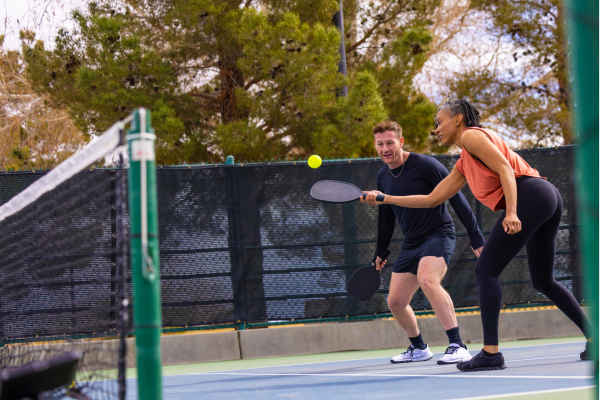10 Important Pickleball Rules Every Player Should Know

Pickleball, a fast-paced and engaging sport, has gained widespread popularity in recent years. Combining elements of several sports, pickleball offers a unique and enjoyable playing experience. However, like any sport, pickleball comes with its own set of rules that govern gameplay, scoring, and conduct. Whether you're a beginner or a seasoned player, understanding these rules is crucial for a fair and enjoyable match. By mastering these rules, you'll not only enhance your gameplay but also contribute to a respectful and competitive pickleball community. In this blog, we'll delve into ten essential pickleball rules that every player should know, so put on your pickleball shoes and let’s get started!
Serving Sequence
Pickleball follows a specific serving order. The serving team must initiate play from the right side of the court and serve diagonally to the opponent's diagonal service court. After the first point, the serving team switches sides and continues serving until they lose a point.
Double Bounce Rule
Both teams must allow the ball to bounce once on each side before volleys (hitting the ball in the air) are allowed. This rule ensures fair play and avoids overly aggressive volleys at the net.
Kitchen (Non-Volley Zone) Rule
The area immediately in front of the net is called the non-volley zone or "kitchen." Players are not allowed to hit volleys while standing inside the kitchen, except when the ball bounces within this zone.
Faults and Let Serves
A fault occurs when a player violates a rule, such as stepping into the kitchen during a volley or serving out of turn. If the ball touches the net on a serve but lands in the correct service court, it's considered a "let" serve, and the serve is retaken.
Scoring
Pickleball uses rally scoring, meaning points can be won on both serving and receiving. The first team to reach 11 points (with a two-point advantage) wins the game. Matches are typically played as best of three games.
Server Positioning
The serving team's players must maintain a specific position during the serve. The server's feet must be behind the baseline and within the sideline, and they must serve diagonally to the opponent's service court.
Faults on Serve
A serve is considered a fault if it lands outside the proper service court, doesn't clear the non-volley zone, or fails to land within the diagonal service court of the opponent. Faults result in a point for the receiving team.
Inbound and Outbound Balls
A ball that lands on or inside the court's boundary lines is considered in play. If a ball lands outside the lines, it's out of play, and the opponent scores a point.
Let Calls
Players can make a "let" call to pause the game when there's interference or uncertainty. If both teams agree, the point can be replayed without affecting the score.
Side-Outs and Switching Sides
When the serving team fails to score a point, they lose the serve and the opposing team gains the opportunity to serve. Players also switch sides of the court at the end of each game to ensure fairness.
Conclusion
As you step onto the pickleball court, understanding these ten essential rules is paramount to a successful and enjoyable game. By adhering to these rules, you contribute to a level playing field and respectful competition. positive experience for all players involved. Whether you're honing your skills for friendly matches or preparing for competitive play, mastering these rules will enhance your confidence and proficiency in the exciting world of pickleball.